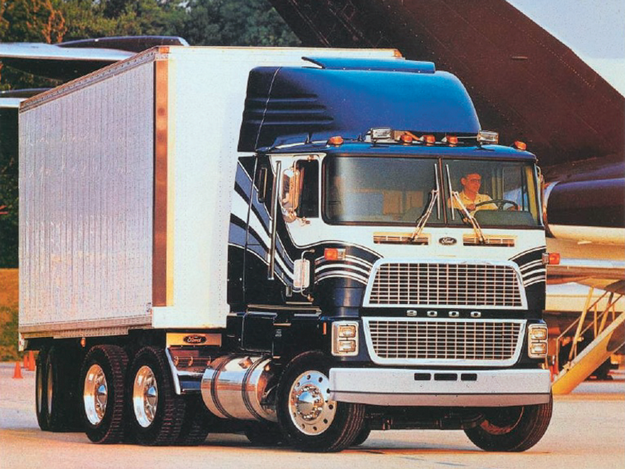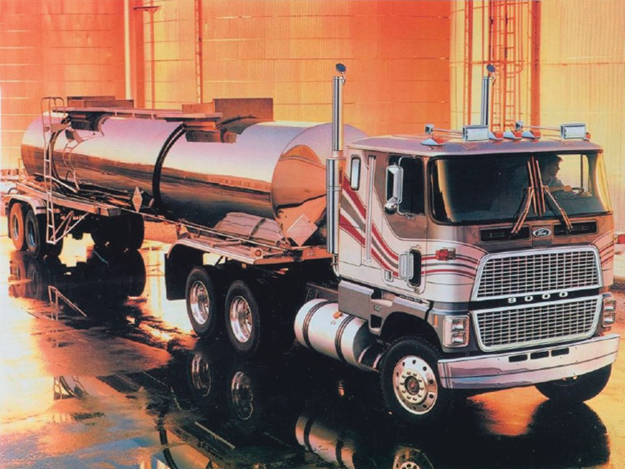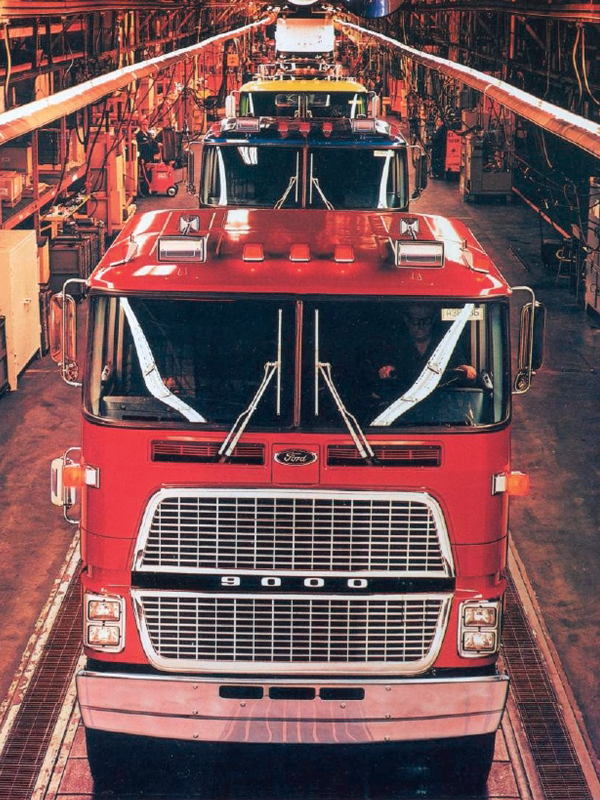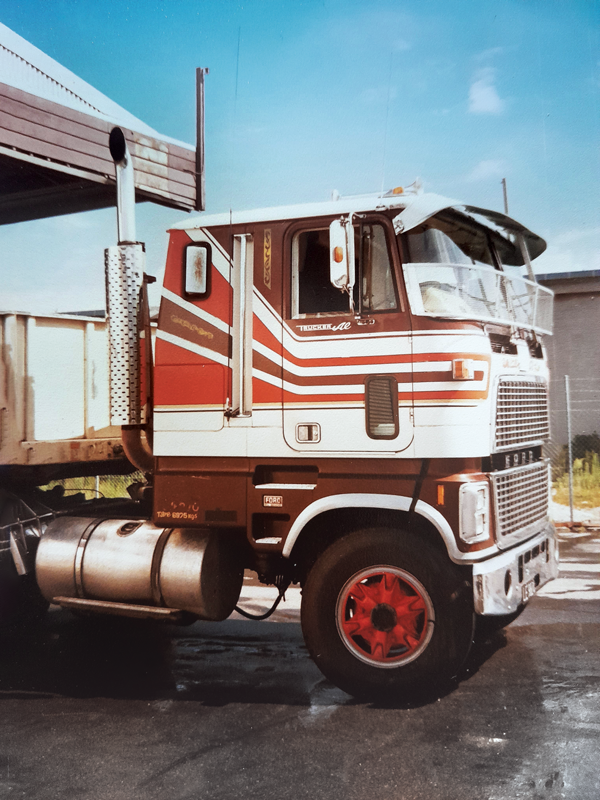Special feature: Whistlin Dixie encore
Rod Simmonds follows up on the Whistlin Dixie Ford CL9000 article Deals on Wheels ran a couple of months ago

The ‘Whistlin Dixie’ sale and restoration article struck a chord with many who remember it running the New Zealand highways during the 1980s.
Being high, wide, and handsome, it was the only Ford CL9000 on the road and stood out like the proverbial in the trucking scene, which back then was dominated by the early underpowered Japanese and Pommie lorries, a sprinkling of Kenworths, Macks along with the up-and-coming European offerings.

The 1980s were the heyday for US Ford heavy truck division with this particular model being made from 1978 to 1991 at their flagship KTP Kentucky Truck Plant, Louisville Kentucky.
Cab-over engine (COE) models from all the manufacturers were booming until the Federal trailer standard length laws were introduced, and the pendulum swung back to the conventional models, with their long noses.
Glory period
 |
|
The CL9000 was made from 1978 to 1991 at the Ford Kentucky Truck Plant, Louisville, Kentucky
|
During that glory period, Ford proudly proclaimed they supplied 133,000 heavy trucks, and at the time of winding down, some 80%, or more than 108,000 units, were still on the road working.
The CL9000/CLT9000 Series trucks boasted what was said to be the largest windscreen on the market, one of the lightest chassis (L10 Cummins version) fuel-efficient aerodynamics, all-welded and galvanised cab, industry-leading interior options, and an electronic stereo radio.
Engines were many and varied, from the lightweight L10-290 to the Cummins Big Cam 290-444+ and Cat 3406s. Due to customer demand, the Detroit Diesels ranged up to 8V92, 450s running through standard nine-speed Roadranger options up to the 13-speed overdrive.
At the backend, Rockwell rears on standard Hendrickson Spring or Walking Beam suspension seemed to be the norm, but other types, such as Reyco, were available as options.
Work-ready
 |
|
The interior was ahead of its time
|
Ford also introduced ex-stock ‘work ready’ fleet truck spec models available for immediate delivery. It could be that Whistlin Dixie may have been one of these models, as the unique Ford stripes were part of that standard package.
Fritolay (Pepsi Cola) brought hundreds of these to transport their goods interstate. The trucks were also used in the trialling to gather driver feedback and improvements — a novel idea back then.
So, it seems Ford initially started a limited options truck that ended up with every option to compete in the huge US, Canadian, and Central American left-hand-drive market.
Never far from home
Offering 14 different cab sizes and other options, Ford positioned themselves as frontrunner in the heavy truck market during that period. Service centres ran the slogan ‘With Ford you’re never far from home’, but they probably never expected a CL9000 would be shipped to New Zealand.
Opinions among drivers seemed to be split evenly, with some either loving or hating the floating cab suspension combined with the innovative seat suspension.
Some commenters reported that the cab leaned so much when cornering that it broke steering components. However, all seemed to agree that the flush-mounted grab handles, bunk comfort, big windows and windscreen, along with reliable wipers were
cutting-edge at the time, which would surely amuse modern truck drivers.
Truck tragics
 |
|
Whistlin Dixie at Seaview, once again — high, wide, and handsome
|
The actual reasons for why and how Whistlin Dixie came to our shores are as varied as the options you could’ve specified, but that didn’t matter to us truck tragics — it was just a bloody cool truck.
One day in Seaview, while making my usual rounds of truck yards on a school holiday Monday, I spotted Whistlin Dixie parked and waiting for the return load home.
The driver let me take plenty of photos inside and out, answered all the questions, and then slipped to a quieter area for a well-deserved rest, leaving me to take more photos.
The next day, the rolls of film from the adventure were posted away to be developed. There were no digital cameras back then. Some 40 years on, those photos were carefully removed from the album for the first time and a couple were used for this follow-up article.
 |
|
Whistlin Dixie in Seaview, Wellington
|
From what I can gather, Whistlin Dixie was originally imported by Victor Lendich, converted locally to right-hand drive, and then went to Nigel Livermore (Sovereign Transport), who ran mainly Auckland to Wellington for TNT Express.
After a couple of years, it was sold to Raymac Transport, where the stripes were painted blue to match the gas bottle brand colours it was contracted to.
After that, there’s plenty of conjecture following the Desert Road accident, sprinkled with tales of it hiding from repossession agents, fitting of an International T-Line cab as a disguise to hide it from other prying eyes, before popping up for sale in Deals on Wheels and now residing in Wairarapa.
But with any great story, the more you ask around, the more you find out —an encore of encore is likely. But wait, there’s more On another note, an innocent comment on a 10-year-old Facebook thread led me down an unexpected path to another Ford CL in New Zealand.
 |
|
The mystery truck in Christchurch
|
It appears a privately imported (8v92 powered, no less) version is awaiting restoration in Christchurch. It seems that it was imported a few years ago, white-on-white colouring, straight from the US, and has already changed owners a few times.
It is (or was) for sale, too. Maybe someone could buy both of them and start a New Zealand Ford CL appreciation society? Sign me up.
Keep up to date in the industry by signing up to Deals on Wheels' free newsletter or liking us on Facebook.


.jpg)



.jpg)


.jpg)

.png)
.png)
.png)
.png)
.jpg)

